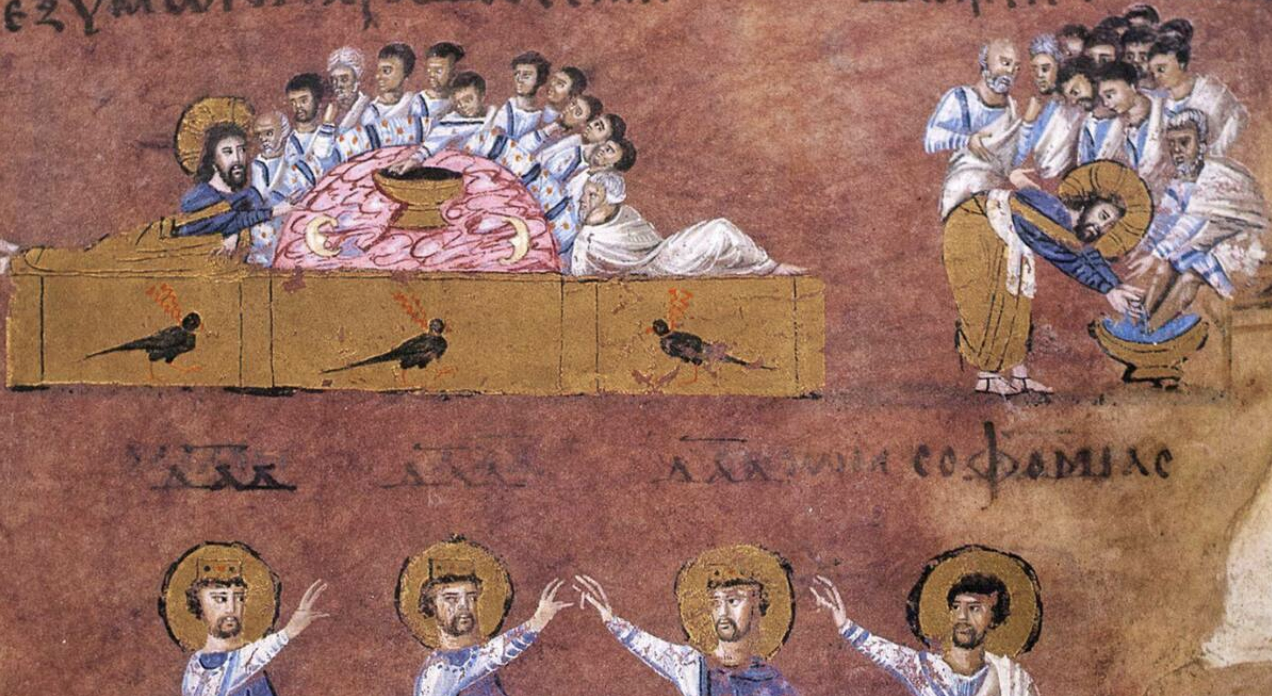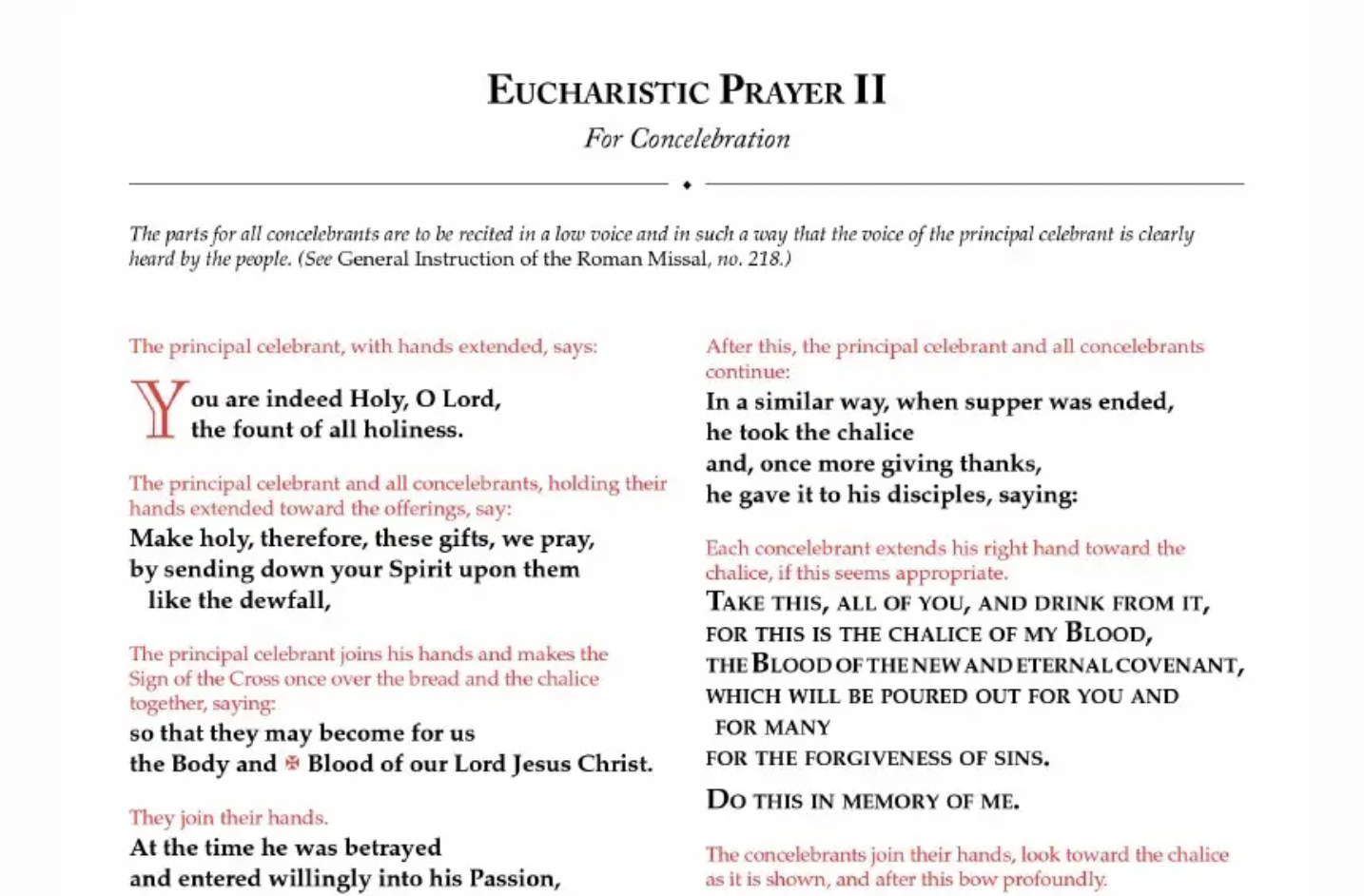Eucharistic Prayer 2 is NOT the Prayer of Hippolytus
The Anaphora of Hippolytus, which some claim is the basis for Eucharistic Prayer II in the Roman Missal, comes from the early 3rd-century text known as the Apostolic Tradition, traditionally attributed to Hippolytus of Rome, a presbyter and antipope (ca. 170–235 AD). Although its authorship and exact date are still debated, the text is an important witness to early Christian liturgical practice.

Is this Liturgy Roman?
The source for this Anaphora is The Apostolic Tradition (or Egyptian Church Order), which was rediscovered in the 19th century and given the name of “Egyptian Church Order”. In the first half of the 20th century, this text was commonly identified with the lost Apostolic Tradition presumed to have been written by Hippolytus of Rome. Due to this assumption, and the apparent early date of the text, Apostolic Tradition played a crucial role in the liturgical reform of the Liturgical Movement and the Second Vatican Council, where it was commonly believed to be the ancient Roman liturgy and authored by Hippolytus of Rome.
In 1906, Eduard von der Goltz was the first to propose that the anonymous manuscript found in the 19th century was the Apostolic Tradition, which has been historically linked to Hippolytus of Rome. If the Apostolic Tradition is the work of Hippolytus of Rome, it would be dated before AD 235 (the year of Hippolytus’s martyrdom), and would have a Roman origin, which is Rome (Brent and Stewart). Opposing this view, Paul Bradshaw argued that the liturgical text was a patchwork from different sources, some Roman and some not, dating from the mid-second to the fourth century and redacted around 375-400 in Egypt or Syria. Lawrence Johnson suggests that the text of the Apostolic Tradition describes a liturgy that was never actually celebrated.
Liturgical scholar Dom Gregory Dix focused on the Anaphora of “Hippolytus” in his research for his 1945 book The Shape of the Liturgy. This book led to the common belief that this Eucharistic prayer represented the ancient Roman Eucharistic Prayer before the development of the Roman Canon in the fourth century. Even if it was the Eucharistic Prayer of Hippolytus, it may represent a schismatic Eucharistic prayer, since Hippolytus was an antipope at odds with several valid popes. It is quite a stretch to say that the Anaphora of “Hippolytus” is actually that of the historical Hippolytus. And even if it were, it may not represent the primordial Roman liturgy of the Catholic Church.
Eucharistic Prayer II and the Napkin Story
Eucharistic Prayer II, although supposedly based on Hippolytus’s text, includes additions like the “dewfall” imagery from later Latin traditions and modifications to conform to modernized liturgical standards. Archives from the Consilium show Eucharistic Prayer II was drafted and revised over several months, with input from experts such as Cipriano Vagaggini and Louis Bouyer.

The “napkin story” about Eucharistic Prayer II being written on a napkin in a Roman tavern comes from an anecdote in the memoirs of Fr. Louis Bouyer, a French theologian and liturgist involved in the post-Vatican II liturgical reforms. The specific source is Bouyer’s Mémoires,[1] published after his death in 2014 by Éditions du Cerf.
[1] Bouyer, Louis. Mémoires. Paris: Éditions du Cerf, 2014, pp. 96–97.
In it, Bouyer recalls that he and Dom Bernard Botte, a Benedictine liturgist, finalized revisions to Eucharistic Prayer II during a late-night meeting at a trattoria in Trastevere, Rome, under pressure to deliver a corrected draft by the next morning. The story is often exaggerated to suggest the entire prayer was written on a napkin, but Bouyer’s account indicates they were refining an existing draft, not creating it from scratch.
Pope Paul VI and Eucharistic Prayer II
Pope Paul VI approved Eucharistic Prayer II in May 1968. Afterwards, Pope Paul VI told Bouyer that he was not fully satisfied with the texts, saying, “Why did you all get mired in this reform?” Bouyer replied, “Because Bugnini kept assuring us that you absolutely wanted it.” Pope Paul VI responded, “But how is this possible? He told me that you were all unanimous in approving it.”[2]
[2] Bouyer, Louis. Mémoires. Paris: Éditions du Cerf, 2014, p. 97. An English translation of this passage is referenced in secondary sources, such as a 2014 article by Sandro Magister on his blog Chiesa (republished by Rorate Caeli on October 23, 2014). See “Original Sins: Eucharistic Prayer II – composed in a few hours in a Roman Trattoria.” Rorate Caeli, September 16, 2014. https://rorate-caeli.blogspot.com/2014/09/original-sins-eucharistic-prayer-ii.html.
This side-by-side comparison reveals that while Eucharistic Prayer II draws language from the Anaphora of Hippolytus, it is not identical to that prayer. The table below indicates that Eucharistic Prayer II accounts for less than 20% of the Anaphora of Hippolytus. The claim that Eucharistic Prayer II is the Anaphora of Hippolytus is highly misleading.
Side-by-Side Comparison
The red text denotes verbiage shared by neither prayer. The bold text denotes verbiage that is shared by both prayers.
Note from Taylor. It almost impossible to format the table showing the side-by-side in html here on the site, so I have included a link to the PDF, which was easier to format: Side-by-side comparison showing that Eucharistic Prayer II is NOT the Anaphora of Hippolytus (click to download).
You do not need to be a scholar to see that the two prayers barely align. There is only about a 20% match in words and concepts. Eucharistic Prayer II is an entirely modern prayer that uses the reputation of the so-called Anaphora of Hippolytus to give the appearance of antiquity and authority. It is a contemporary innovation. While it may not have been written in toto on the back of a napkin, it does not represent the ancient Roman liturgy.
Ferrari Analogy
Imagine finding the ruins of an old car in a car scrap heap. Two experts say, “This car could very well be the famous 1963 Ferrari 250 GTO!”

Meanwhile, various experts cannot agree whether the discovered car is definitely a 1963 Ferrari 250 GTO. Dom Gregory Dix then writes an extremely popular book, Old Classic Ferraris, in which he claims that the discovered car is definitely the ultra-rare 1963 Ferrari 250 GTO, and this leads all automotive experts to study the scrap heap car. Then everyone bases all their knowledge of Ferraris on this now famous car found in the scrap heap.
They then announce the unveiling of the 1963 Ferrari 250 GTO to the public! To create this car, they take a mere 20% of the parts and styling from the junk heap car (of questionable origin) and the remaining 80% of the needed parts from modern race cars. Voila! They then enshrine the new creation and place a plaque saying, “Behold, this is the original 1963 Ferrari 250 GTO.”
This is Eucharistic Prayer 2. A manuscript of unknown origin was discovered. It was attributed to St Hippolytus (an antipope) as the ancient Roman Eucharistic Prayer. Then 20% of that prayer was used to create an entirely new prayer and published in 1970 with the reputation of being “The Eucharistic Prayer of Hippolytus.”
The folly is manifest.
ad Jesum per Mariam,
Taylor R. Marshall
PS: Use the Roman Canon!
What to Watch Next
SHOP THE TAYLOR MARSHALL STORE
Dive Deeper

GET CONFIDENT IN YOUR FAITH
Explore the fascinating world of Catholic teachings with Dr. Marshall. Together you’ll unpack the brilliant answers the Church gives to tough questions about the Faith. The best part: you go at your own pace. Start this exciting journey today.


 >
>



